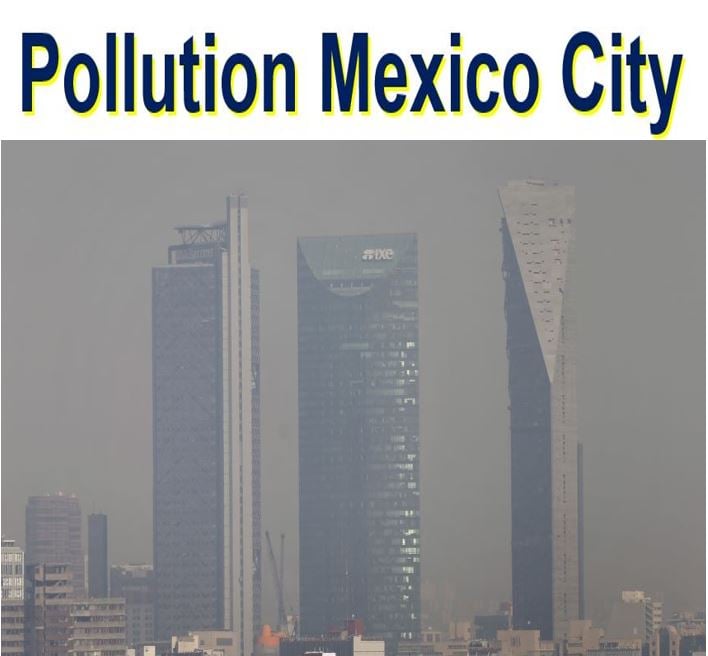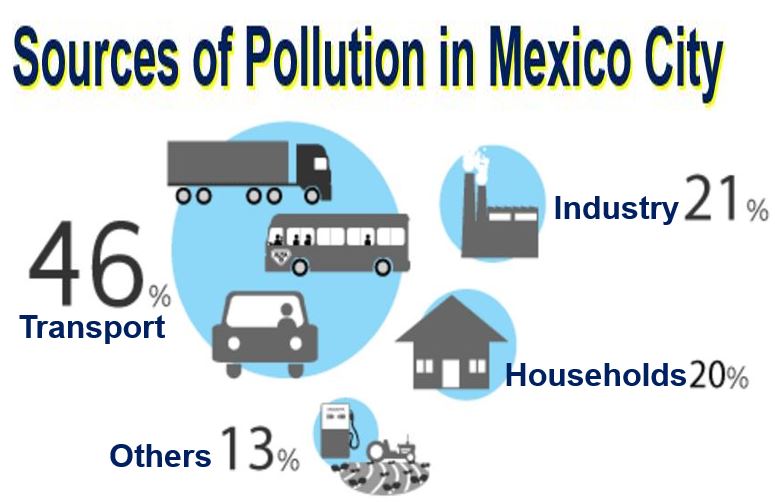Mexico City ozone levels went through the roof during the weekend – however, air quality improved on Sunday afternoon after it began to rain. Ozone levels within Mexico’s capital exceeded 150% of acceptable limits for human tolerance. The country’s capital, a huge city, has lifted the smog alert.
On Sunday morning, a statement from the city’s Environmental Commission (Comisión Ambiental de la Megalópolis) said that more favourable conditions on Sunday morning, plus rain that followed later in the day, helped reduce harmful particle and ozone concentrations.
As part of the Hoy No Circula (Today Don’t Circulate) contingency programme, twenty percent of the city’s motor vehicles were banned from circulating on Sunday. At 3pm, after rain improved the quality of the air, the ban was lifted.
 Mexico City’s air quality on Monday, 16th May, 2016, according to the atmospheric measuring devices spread across the metropolitan area. Conditions have improved considerably since Sunday morning. (Image: aire.df.gob.mx)
Mexico City’s air quality on Monday, 16th May, 2016, according to the atmospheric measuring devices spread across the metropolitan area. Conditions have improved considerably since Sunday morning. (Image: aire.df.gob.mx)
The Comisión Ambiental de la Megalópolis informed in a press bulletin yesterday (translated):
“During the rest of the afternoon (Sunday) and evening a significant reduction in pollution levels is expected, as well as continued scattered showers throughout the night.”
“The Commission thanks the city’s residents for their responsible participation and invites them to keep informed by going to the following web page – www.aire.df.gob.mx – or downloading the AIRE App for Android and iOS.”
Southeast of Mexico City worst hit
Mexico City has several pollution measuring devices across the metropolitan area. A device in Tláhuac, which is in the south-east of the city, registered an ozone level of 157 points.
 I lived in Mexico City for several years. I remember waking up in the morning and the air smelled like a mechanic’s workshop. On a bad day my eyes would go red, and the inside of my nose would dry out and become crusty. Headaches became inevitable. The only way to protect yourself was either to stay indoors with the windows closed or get out of the city.
I lived in Mexico City for several years. I remember waking up in the morning and the air smelled like a mechanic’s workshop. On a bad day my eyes would go red, and the inside of my nose would dry out and become crusty. Headaches became inevitable. The only way to protect yourself was either to stay indoors with the windows closed or get out of the city.
This was the fourth time in 2016 that local authorities had to imposed the Hoy No Circula alert because of air pollution.
March’s alert was the first one to be imposed in over ten years, when Mexico City reduced the pollution ceiling for declaring an alert by one quarter – from 200% of acceptable levels to 150%.
Monday’s Hoy No Circula program includes vehicles with licence plates that end in five or six, automobiles with yellow stickers, and holograms with 00, 0, 2 and 1.
About Mexico City
Mexico City, the capital of Mexico, known by non-Mexican Spanish speakers as La Ciudad de México and by Mexicans as El D.F. (The DF – Distrito Federal), is one of the most populated urban areas in the world. It is located in the Valley of Mexico, at an altitude of 7,350 feet (2,240 metres), surrounded by mountains on all sides.
It is the largest metropolitan area in the Western Hemisphere, the 10-largest agglomeration in the world, and the biggest city in the Spanish-speaking world. It is responsible for creating 15.8% of the country’s GDP (gross domestic product).
 By far the largest contributor to Mexico City’s foul air is transport. (Image: aire.df.gob.mx)
By far the largest contributor to Mexico City’s foul air is transport. (Image: aire.df.gob.mx)
Mexico City’s GDP reached $390 billion last year, making it the 8th richest city globally after Tokyo, New York City, Los Angeles, Chicago, Paris, London and Osaka/Kobe, and the richest in Latin America.
There are many factories on the outskirts of the city. As it is surrounded by mountains, there are often days with virtually no wind, when industrial and vehicular pollution build up in the atmosphere rapidly. Add to this the already thin air (high altitude), and you get a lethal cocktail for humans to breathe.
Ground level ozone, when levels are high, is bad for us. However, the ozone higher up in the atmosphere, in the stratosphere, protects us from harmful UV radiation from the Sun.
Video – Mexico City measures to combat pollution
To address recent air pollution peaks and increases in smog-associated diseases, Mexico announced it will be taking extraordinary measures, including the conversion of the city’s public transportation fleet to natural gas.
